posted on Monday, December 2, 2019
Milk has been a staple beverage in American diets for decades. But has milk consumption changed in recent years? With the help of technology and automation in the dairy industry, U.S. milk production more than doubled since 1930. The state of dairy in the U.S. is constantly changing and some insights gained from USDA data are shown below.
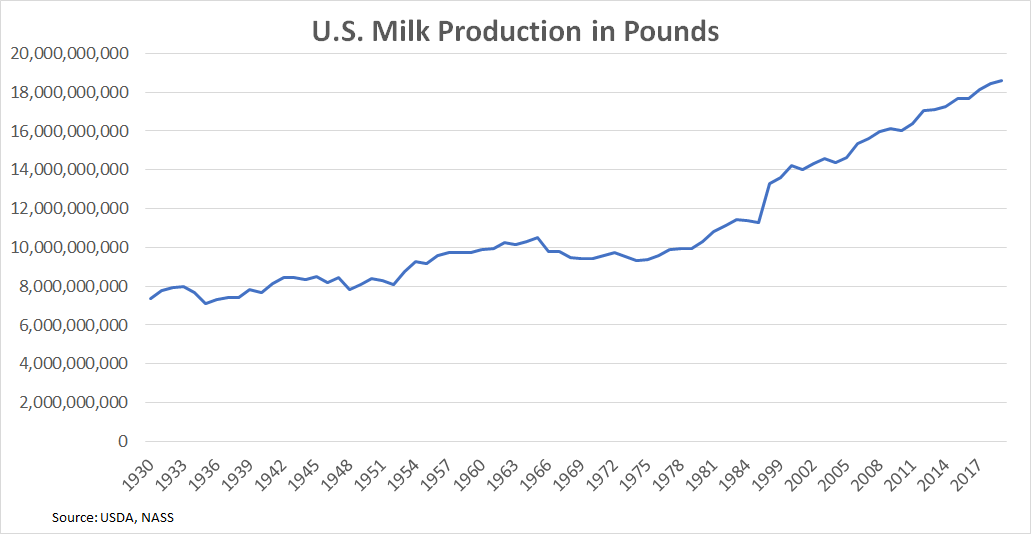
Recent events have highlighted challenges facing milk producers. Data from the 2017 Census of Agriculture shows a decline of 20% in the number of milk operations across the nation since 2012. Changing diets have also influenced Americans’ consumption of dairy. Since 2008 per-capita fluid milk consumption has decreased by 18%. Increasing competition from plant-based milk substitutes are also taking a toll on fluid milk consumption.
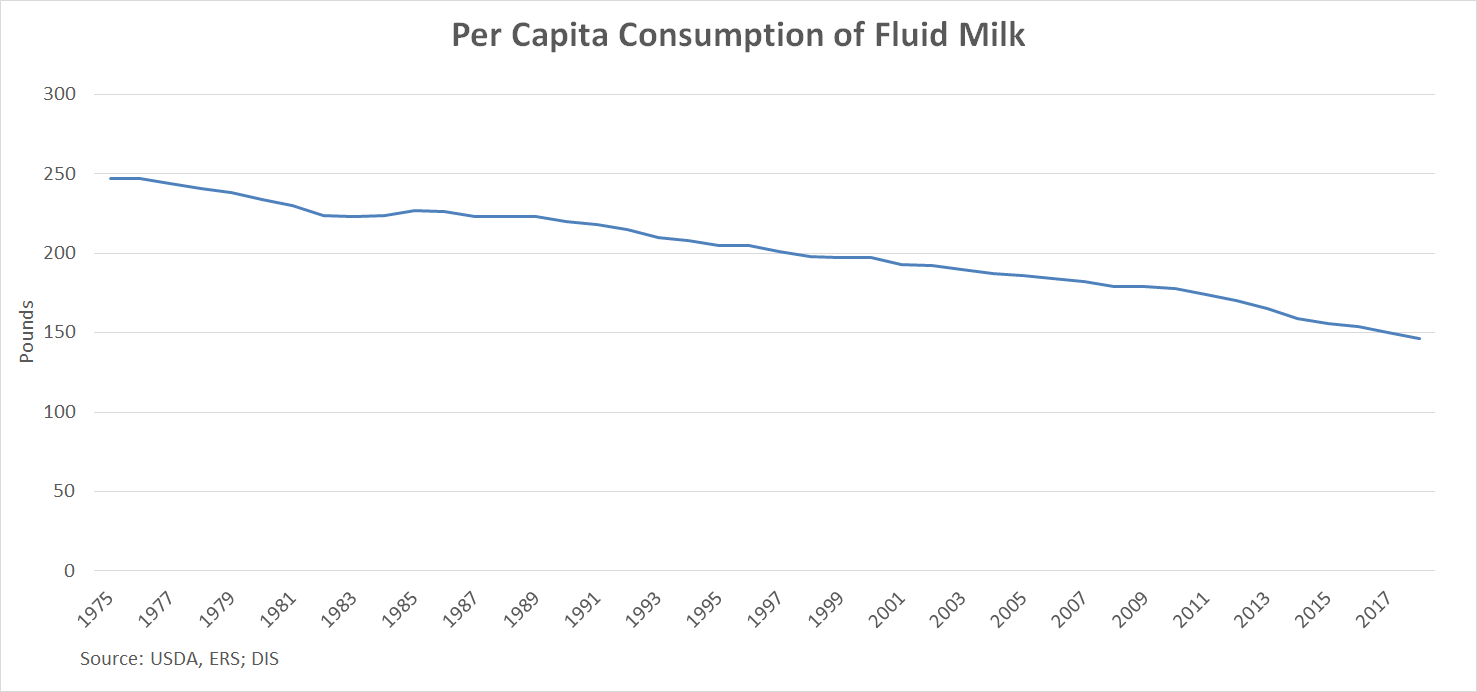
Though overall fluid milk sales have been decreasing over the past few decades there are a few exceptions. Since the year 2000, low fat milk and non-whole flavored milk have seen prolonged periods of positive growth in sales.
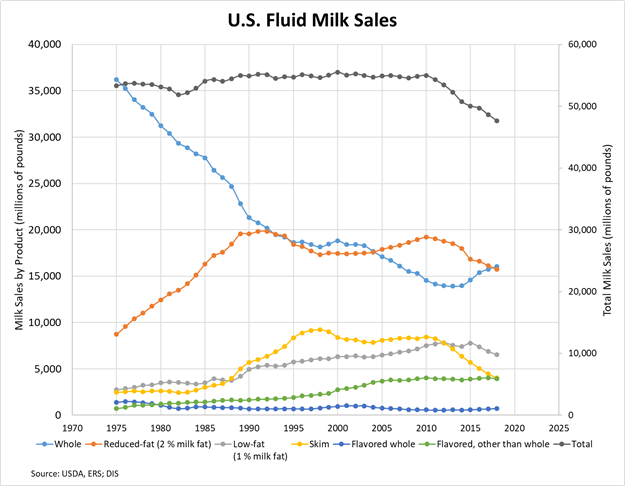
Milk is used in a wide variety of products. Although the per-capita consumption of fluid milk may be declining, consumption of other products derived from milk are seeing growth. Since 2000 per-capita consumption of cheese and yogurt in the U.S. have risen by 25% and 106% respectively.
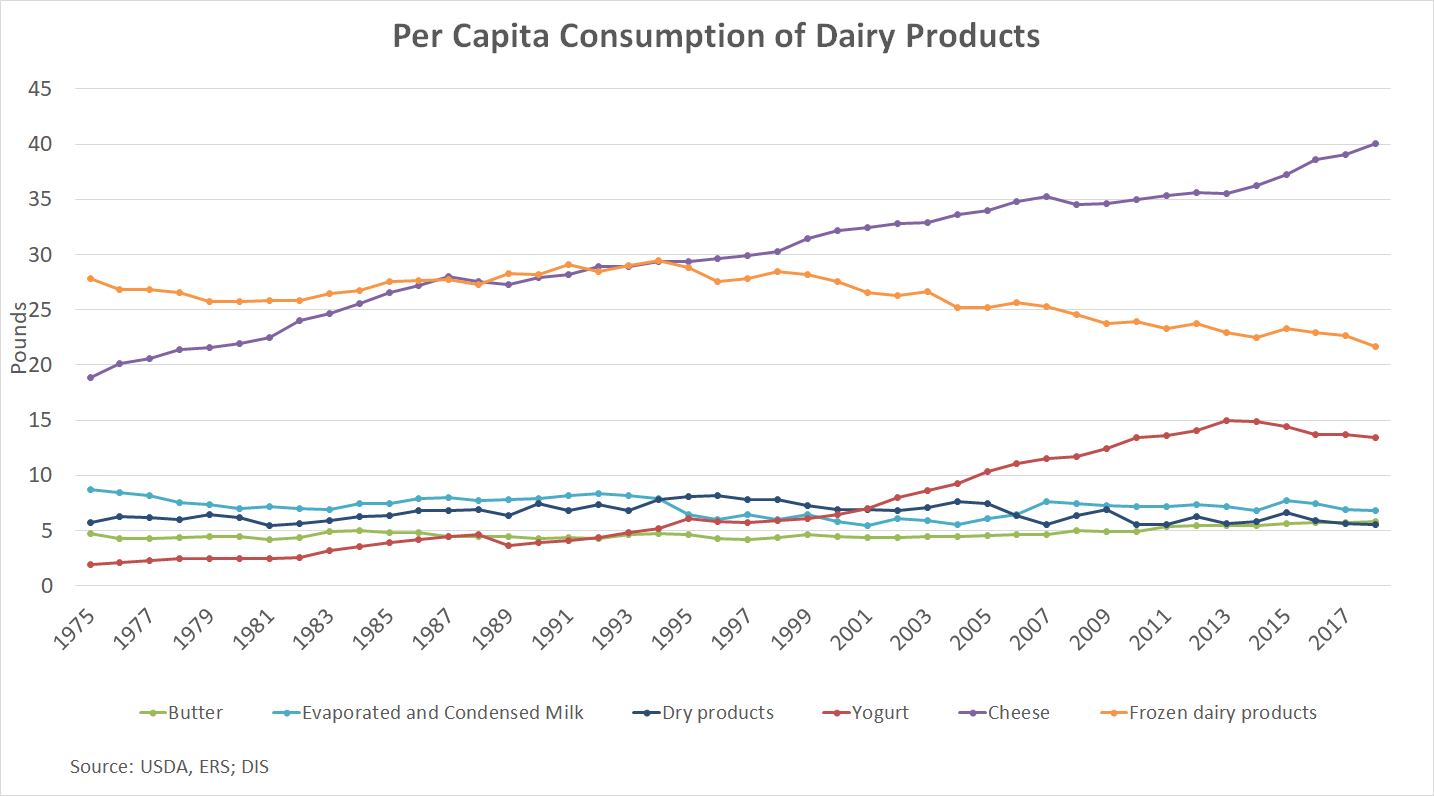
Iowa produces a little over 2% of the milk in the U.S. by weight. From 2012 to 2017 the total number of milk operations in Iowa declined by 18%. It should be noted that operations within the $500,000 to $999,999 economic class actually saw an increase of 7% in the total number of facilities operating in Iowa. More investigation is needed to see why operations of this size have defied the trend of other enterprises.
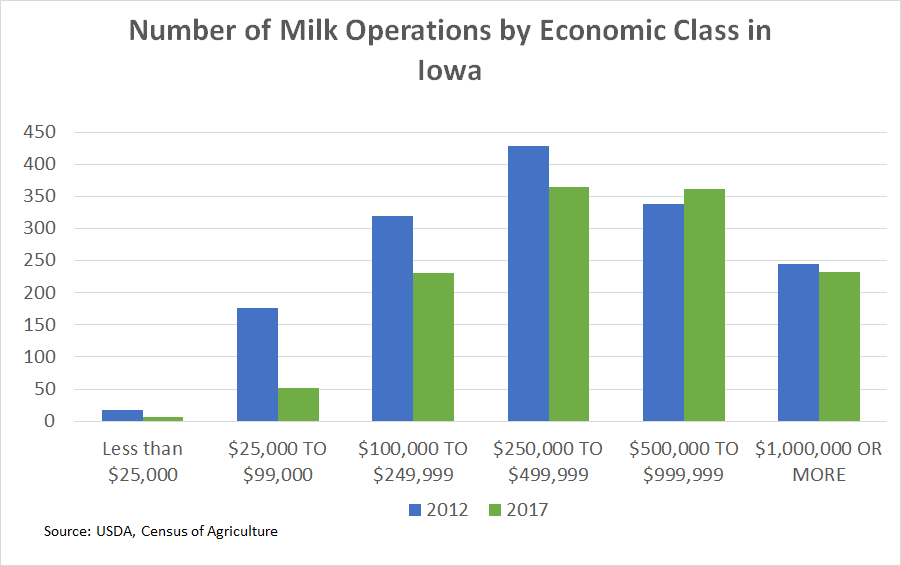
Many dairy farmers have turned to a number of methods to increase the profitability of their operations. From creating bio-gas and bio-fuel from the byproducts of production process, to turning to niche markets like flavored and organic products, continued innovations may be necessary in the future to overcome challenges facing the dairy industry.